Discover 35 hidden attractions, cool sights, and unusual things to do in Southampton (United Kingdom). Don't miss out on these must-see attractions: Ocean Village, Netley Castle, and Tudor House and Garden. Also, be sure to include St Mary's Stadium in your itinerary.
Below, you can find the list of the most amazing places you should visit in Southampton (England).
Table of Contents
Ocean Village
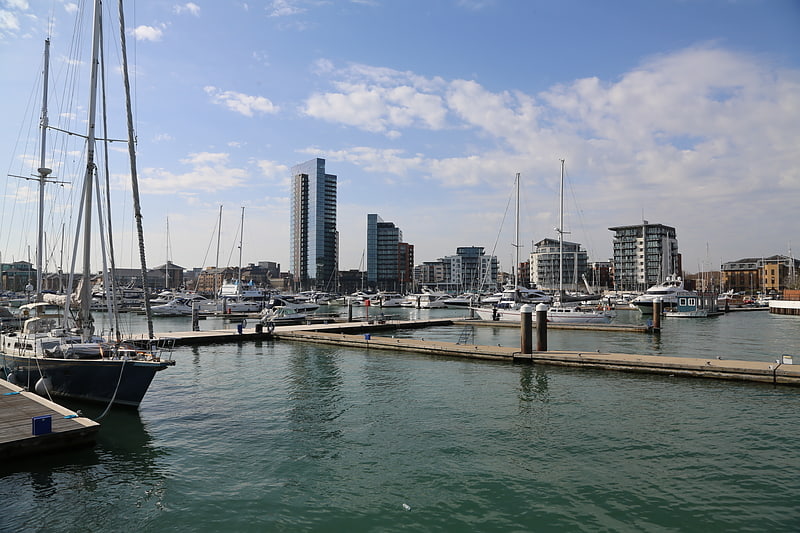
Ocean Village is a mixed-use marina, residential, business and leisure development on the mouth of the River Itchen in Southampton, on the south coast of England. Originally the site of Southampton's first working docks, the "Outer Dock" which opened in 1842, the area was redeveloped in 1986 and became the leisure marina it is today. After experiencing a period of stalled development with the late-2000s recession, Ocean Village underwent another series of major, multimillion-pound redevelopment projects. Current recreational facilities include a cinema, cafes, wine bars and restaurants.
The marina is managed and owned by Marina Developments Limited (MDL), a division of British-based Yattendon Investment Trust. The area, formerly used for commercial ships, offers 375 berths and the basin is deep enough to provide mooring facilities for tall ships and large yachts. The Global Challenge yacht races started from here in 1992, 1996 and 2000, and the Clipper Round the World Yacht Race set sail from here in 2011. Ocean Village was also the base for the Royal Southampton Yacht Club until 2018.
A number of companies have offices in the complex, including PricewaterhouseCoopers. The marina is home to the historical building, Enterprise House, which was originally a dock warehouse and has now been converted into serviced offices.[1]
Address: 21 Town Quay, SO14 3JS Southampton (Southampton Itchen)
Netley Castle
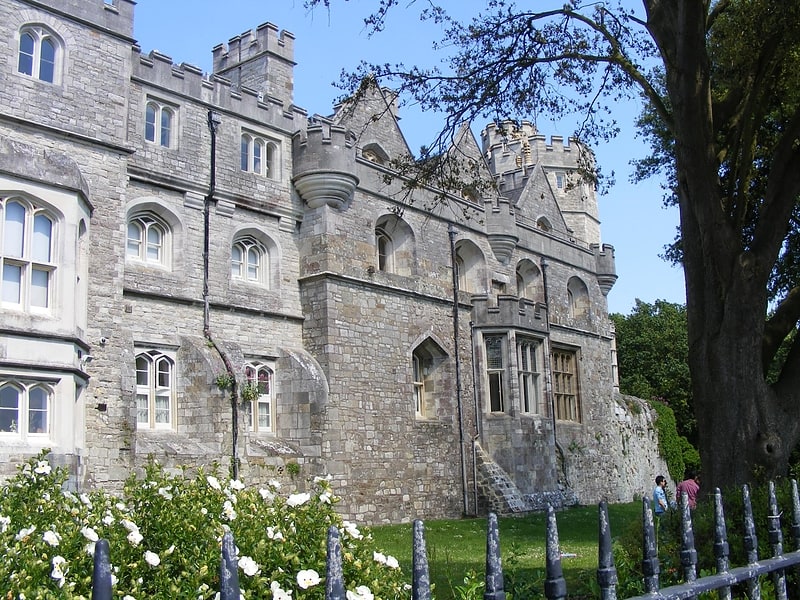
Housing. Netley Castle is a former artillery fort constructed in either 1542 or 1544 by Henry VIII in the village of Netley, Hampshire. It formed part of the King's Device programme to protect against invasion from France and the Holy Roman Empire, and it defended Southampton Water near the Solent. The castle included a central, stone keep with two flanking gun platforms and was garrisoned by ten men. It was decommissioned during the English Civil War and by 1743 it was overgrown and in ruins. In the 19th century the property was gradually converted into a private house, being extended in a Gothic style, complete with octagonal towers. Between 1939 and 1998 it was used as a nursing home, until the high costs of maintenance led to its closure. Following an archaeological survey, it was then converted into nine residential flats. It is protected under UK law as a Grade II* listed building.[2]
Tudor House and Garden

Museum in Southampton, England. Tudor House and Garden is a historic building, museum, tourist attraction, and Grade I listed building in Southampton, England. Established as Southampton's first museum in 1912, the house was closed for nine years between 2002 and 2011 during an extensive renovation.
The house is located in Bugle Street, opposite St. Michael's Square, in Southampton's Old Town.[3]
Address: Bugle St, SO14 2AD Southampton (Southampton Itchen)
St Mary's Stadium
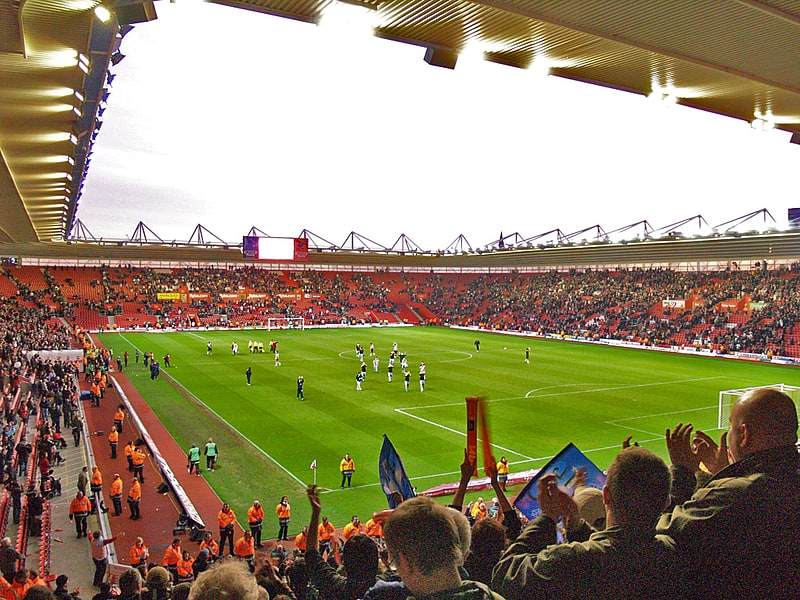
Stadium in Southampton, England. St Mary's Stadium is an all-seater football stadium in Southampton, England, has been the home stadium of Premier League club Southampton F.C. since 2001. The stadium has a capacity of 32,384 and is currently the largest football stadium outside London in Southern England.[4]
Address: Britannia Rd., SO14 5RG Southampton (Southampton Test)
The Joiners
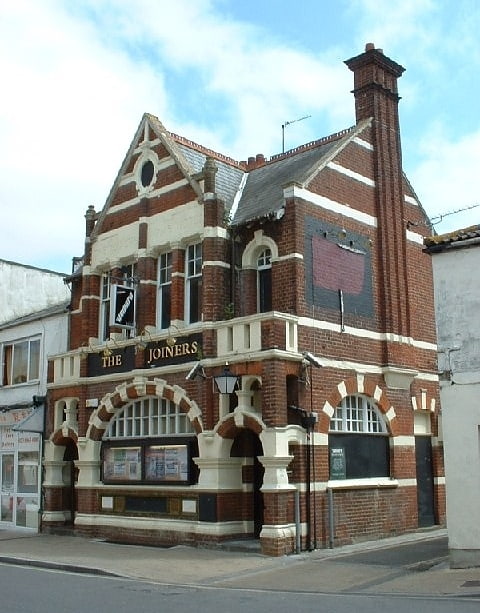
The Joiners is a small music venue in a former pub on St Mary Street, St Mary's, Southampton, England. It has played host to many up-and-coming bands. The pub started having live acts in the back room in 1968. The maximum capacity is 200 people.
In 2013, the venue was named Britain's best small music venue in a competition run by NME.
In December 2006, writer Oliver Gray published a book entitled Access One Step: The Official History of the Joiners Arms, which documents the history of the venue and includes a foreword by Razorlight drummer Andy Burrows.[5]
Address: 141 St Mary Street, Southampton (Southampton Itchen)
SeaCity Museum

Museum in Southampton, England. The SeaCity Museum is a museum in Southampton, England, which opened on 10 April 2012 to mark the centenary of RMS Titanic's departure from the city. It is housed within a part of the Grade II* listed civic centre building which previously housed the magistrates' court and police station. The museum contains two permanent exhibitions, one dedicated to Southampton's connection with RMS Titanic, and the other to the city's role as gateway to the world. A third space for temporary exhibitions is housed in a purpose built pavilion extension to the civic centre. Further phases of development may yet add to the exhibition space.
The museum was designed by Wilkinson Eyre with Kier Southern serving as the main contractor. The budget for the museum was £15M, approximately £5M of which came from the Heritage Lottery Fund, with Southampton City Council and Southampton Cultural Development Trust providing the remainder. The council had planned on selling works from their municipal art collection to fund the museum, but backed down after encountering significant opposition from both within and outside the city.[6]
Address: Havelock Rd, SO14 7FY Southampton (Southampton Itchen)
Itchen Bridge
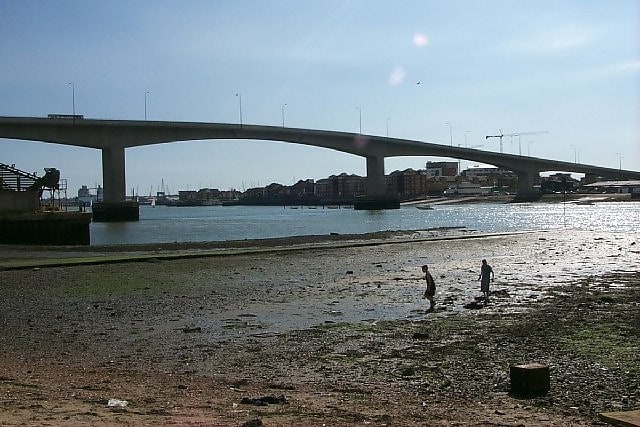
Bridge in Southampton, United Kingdom. The Itchen Bridge is a bridge over the River Itchen in Southampton, Hampshire. It is a high-level hollow box girder bridge. It is located about a mile from the river mouth. The bridge spans 870 yards, is 92 feet at its highest point and weighs 62,000 tons. The bridge connects the A3025 Portsmouth Road to Southampton. It was built to replace the former chain ferry, known as the Floating Bridge, that crossed the river at that point. The bridge's set of blue energy-saving lights can be seen from up to 5 miles down Southampton Water from the bridge.
The bridge has achieved notoriety as a venue for suicide, with over 200 alleged suicides recorded since its opening in 1977, prompting calls for the construction of preventive measures along its length.[7]
Calshot Castle
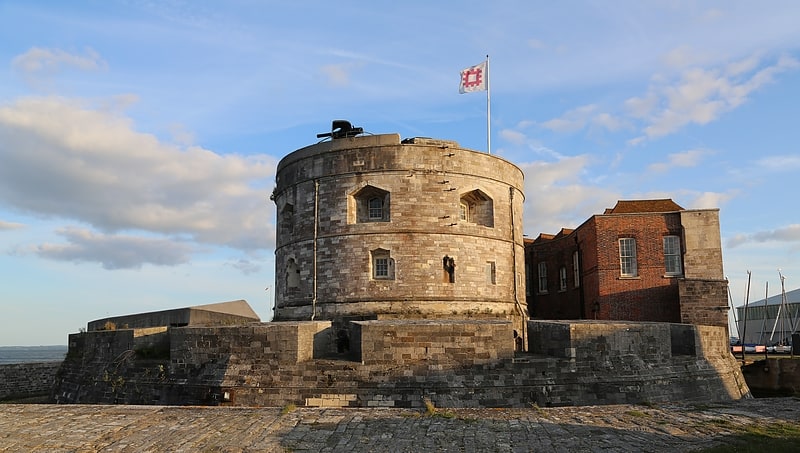
Castle in Calshot, England. Calshot Castle is an artillery fort constructed by Henry VIII on the Calshot Spit, Hampshire, England, between 1539 and 1540. It formed part of the King's Device programme to protect against invasion from France and the Holy Roman Empire and defend Southampton Water as it met the Solent. The castle had a keep at its centre, surrounded by a curtain wall and a moat. Initially heavily armed, it had a garrison of 16 men and as many as 36 artillery guns. The castle continued in use for many years, surviving the English Civil War intact and being extensively modernised in the 1770s. During the 19th century, Calshot Castle was used by the coastguard as a base for combating smuggling. In 1894, however, fresh fears of a French invasion led to it being brought back into use as an artillery fort: a large coastal battery was constructed alongside the older castle and a boom built across Southampton Water, controlled from the castle.
During the First World War, Calshot Castle was primarily used as a base for seaplanes, deployed on anti-submarine patrols in the English Channel; its guns were removed before the end of the war, probably for use in France. The air base, by then called RAF Calshot, grew in size during the inter-war years, hosting the Schneider Trophy air races. With the outbreak of the Second World War, Calshot was re-armed in the face of a possible German invasion. The station continued in use after the war, but as military seaplanes became obsolete, it was finally closed in 1961. After a short period of use by the coastguard, the castle was opened to the public by English Heritage in the 1980s. Restored to its pre-1914 appearance, the castle received 5,751 visitors in 2010. Historic England considers Calshot a "well-preserved example" of King Henry's Device Forts.[8]
Address: Calshot Road, SO45 1BR Calshot
Netley Common
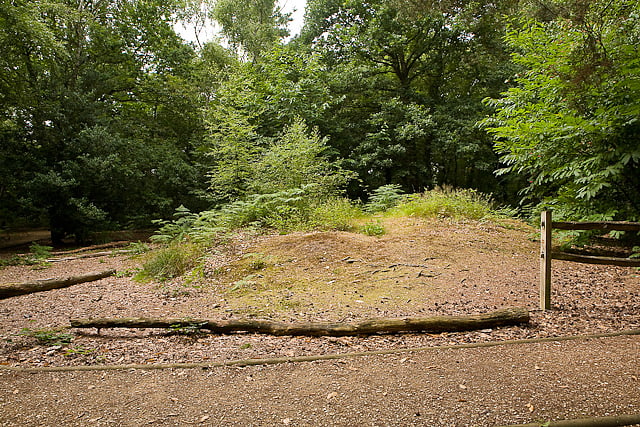
Nature preserve in England. Netley Common is a 12.8-hectare Local Nature Reserve in Southampton in Hampshire. It is owned by Hampshire County Council and managed by Hampshire Countryside Service.
This lowland heath site also has areas of grassland, woods, scrub and gorse. Reptiles include common lizards and adders. A Roman road crosses the site, and there is also a Bronze Age barrow.[9]
Titanic Engineers' Memorial

Sculpture by Ferdinand Victor Blundstone and Romeo Ratman. The Titanic Engineers' Memorial is a memorial in East Park, Southampton, United Kingdom, to the engineers who died in the Titanic disaster on 15 April 1912. The bronze and granite memorial was originally unveiled by Sir Archibald Denny, president of the Institute of Marine Engineers on 22 April 1914. The event was attended by an estimated 100,000 Southampton residents.[10]
Address: 6 London Rd, Southampton, Southampton (Southampton Itchen)
Southampton Old Cemetery
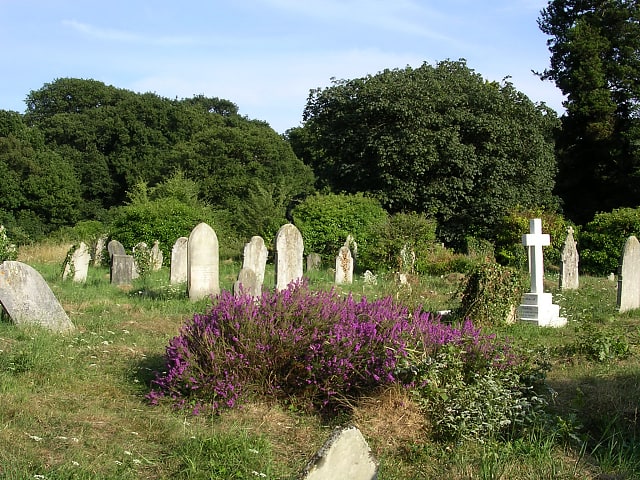
Cemetery in Southampton, England. The cemetery has had various titles including The Cemetery by the Common, Hill Lane Cemetery and is currently known as Southampton Old Cemetery. An Act of Parliament was required in 1843 to acquire the land from Southampton Common. It covers an area of 27 acres and the total number of burials is estimated at 116,800. Currently there are 6 to 8 burials a year to existing family plots.[11]
Address: Cemetery Road, Southampton (Southampton Test)
Old Walls
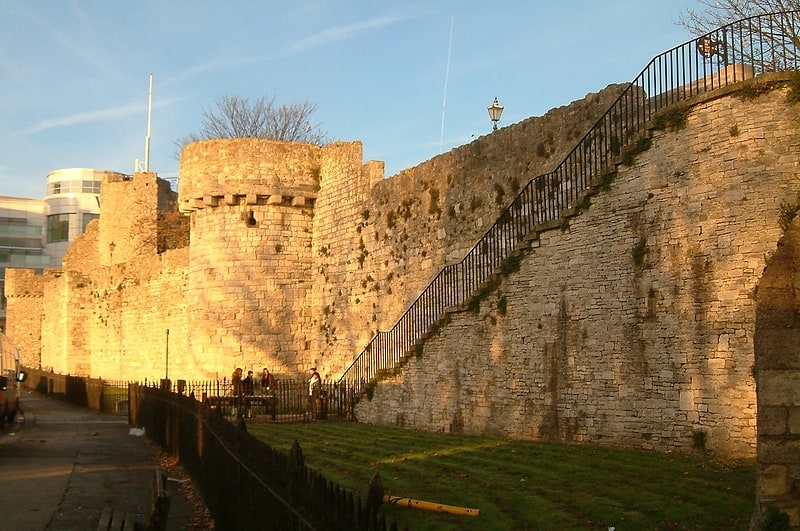
Historical landmark in Southampton, England. Southampton's town walls are a sequence of defensive structures built around the town in southern England. Although earlier Roman and Anglo-Saxon settlements around Southampton had been fortified with walls or ditches, the later walls originate with the move of the town to the current site in the 10th century. This new town was defended by banks, ditches and the natural curve of the river and coastline. The Normans built a castle in Southampton but made no attempts to improve the wider defences of the town until the early 13th century, when Southampton's growing prosperity as a trading centre and conflict with France encouraged the construction of a number of gatehouses and stone walls to the north and east sides of the settlement.
In 1338 Southampton was raided by French forces; the town's defences proved inadequate, particularly along the quays on the west and south of the city. Edward III ordered some immediate improvements to Southampton's town walls but it was not until the 1360s that substantial work began. Over the coming decades the town was entirely enclosed by a 2 km (1.25-mile) long stone wall, with 29 towers and eight gates. With the advent of gunpowder weapons in the 1360s and 1370s, Southampton was one of the first towns in England to install the new technology to existing fortifications and to build new towers specifically to house cannon.
Southampton's town walls remained an important defensive feature during the 15th century, the gatehouses sometimes being used as important civic facilities, including acting as the town's guildhall and housing the town's gaol. From the end of the 17th century their importance steadily declined and the walls were slowly demolished or adapted for other uses throughout the 18th and 19th centuries. This process continued into the early 20th century until, in the post-war years, the walls were recognised as an important historical feature of Southampton. Conservation projects have since occurred and the walls are now promoted as a tourist attraction.[12]
Solent Sky
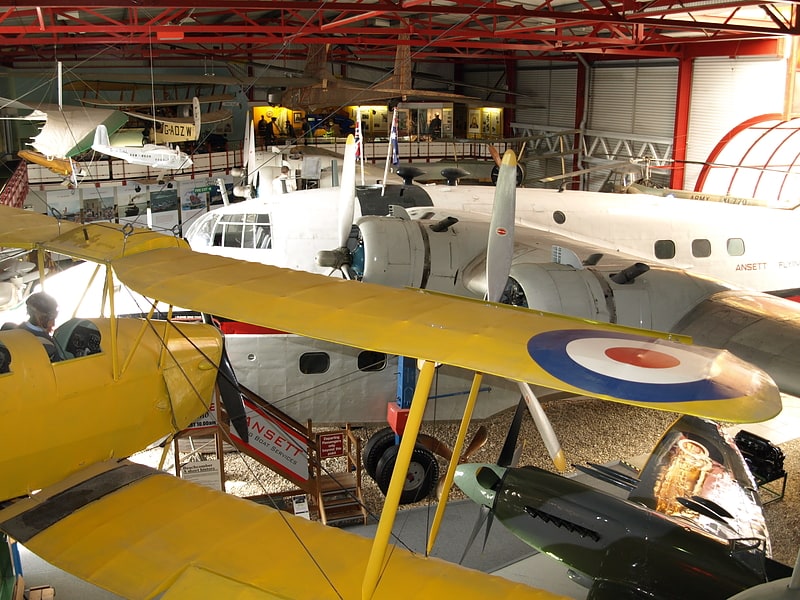
Museum in Southampton, England. Solent Sky is an aviation museum in Southampton, Hampshire, previously known as Southampton Hall of Aviation.
It depicts the history of aviation in Southampton, the Solent area and Hampshire. There is special focus on the Supermarine aircraft company, based in Southampton, and its most famous products, the Supermarine S.6 seaplane and the Supermarine Spitfire, designed by R. J. Mitchell. There is also coverage of the Schneider Trophy seaplane races, twice held at Calshot Spit, and the flying boat services which operated from the Solent. In December 2019 the Calshot Spit lightship was relocated next to the museum in order to be converted into part of the museum's cafe. In September 2020, 3 of Southampton's former trams were moved to the museum site where it is planned they will undergo restoration before going on public display.
Construction of the current building began in 1983 and was designed by Barry Eaton, then the City Architect. It opened in 1984.[13]
Address: Albert Rd S, SO14 3FR Southampton (Southampton Itchen)
Southampton Castle
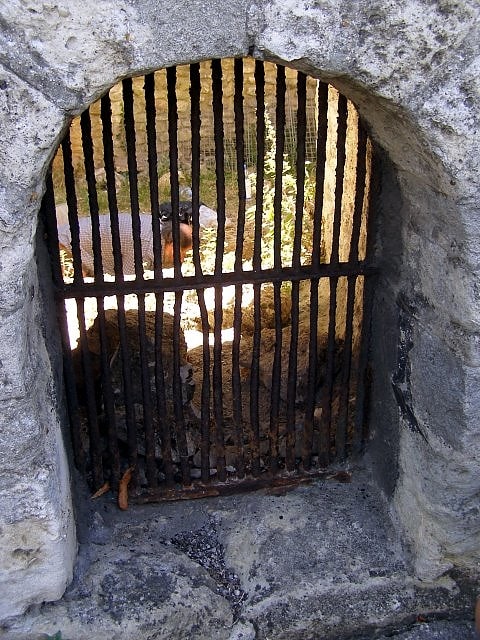
Southampton Castle was located in the town of Southampton in Hampshire, England. Constructed after the Norman conquest of England, it was located in the north-west corner of the town overlooking the River Test, initially as a wooden motte and bailey design. By the late 12th century the royal castle had been largely converted to stone, playing an important part in the wine trade conducted through the Southampton docks. By the end of the 13th century the castle was in decline, but the threat of French raids in the 1370s led Richard II to undertake extensive rebuilding. The result was a powerfully defended castle, one of the first in England to be equipped with cannon. The castle declined again in the 16th century and was sold off to property speculators in 1618. After being used for various purposes, including the construction of a Gothic mansion in the early 19th century, the site was flattened and largely redeveloped. Only a few elements of the castle still remain visible in Southampton.[14]
Medieval Merchant's House

Heritage building in Southampton, England. The Medieval Merchant's House is a restored late-13th-century building in Southampton, Hampshire, England. Built in about 1290 by John Fortin, a prosperous merchant, the house survived many centuries of domestic and commercial use largely intact. German bomb damage in 1940 revealed the medieval interior of the house, and in the 1980s it was restored to resemble its initial appearance and placed in the care of English Heritage, to be run as a tourist attraction. The house is built to a medieval right-angle, narrow plan design, with an undercroft to store wine at a constant temperature, and a first-storey bedchamber that projects out into the street to add additional space. The building is architecturally significant because, as historian Glyn Coppack highlights, it is "the only building of its type to survive substantially as first built"; it is a Grade I listed building and scheduled monument.[15]
Address: 58 French St, SO14 2AT Southampton (Southampton Itchen)
Southampton Common

Park in Southampton, England. Southampton Common is a large open space to the north of the city centre of Southampton, England. It is bounded by the districts of Shirley, Bassett, Highfield and Portswood. The area supports a large variety of wildlife, including one of the largest populations in Britain of the nationally rare great crested newt. The Common is used for a wide variety of community events, Flower Festival, Race for life Cancer Research UK and formerly 'Power in the Park' hosted by Power FM.
An area of 223-acre (90.3-hectare) is a biological Site of Special Scientific Interest.[16]
Address: The Ave, SO14 6TY Southampton (Southampton Test)
Bursledon Brickworks
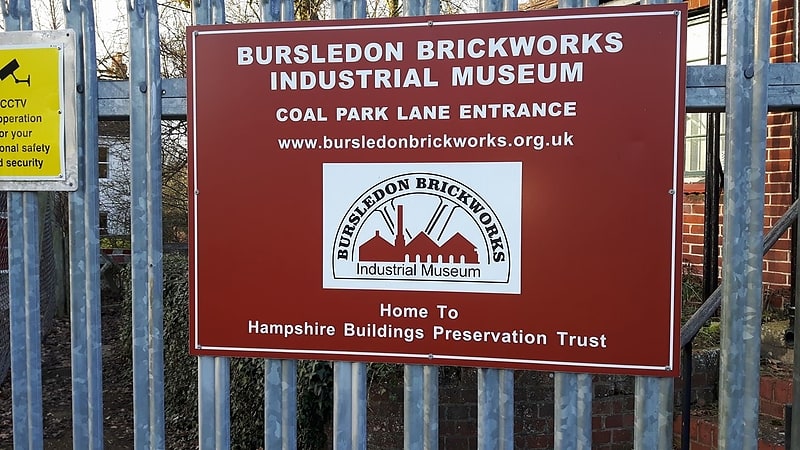
Museum in Swanwick, England. The Brickworks Museum, also known as Bursledon Brickworks, is a volunteer-run museum in Swanwick, Hampshire, England. It is purportedly the UK's sole surviving Victorian steam-driven brickworks.
The brick kiln, chimney, drying sheds, and the boiler and engine house at the south section of the brickworks are listed Grade II* as a group on the National Heritage List for England.[17]
Address: Southampton, Coal Park Lane / Swanwick Lane
God's House Tower
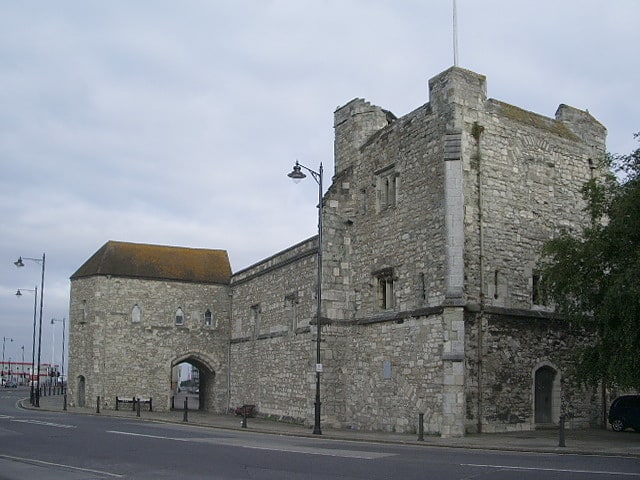
Museum in Southampton, England. God's House Tower is a late 13th century gatehouse into the old town of Southampton, England. It stands at the south-east corner of the town walls and permitted access to the town from the Platform and Town Quay. It is now an arts and heritage venue, and has previously served as the town gaol and housed the Museum of Archaeology. The building is Grade I listed and a scheduled ancient monument.[18]
Address: Winkle Street, SO14 2NY Southampton (Southampton Itchen)
Holyrood Church
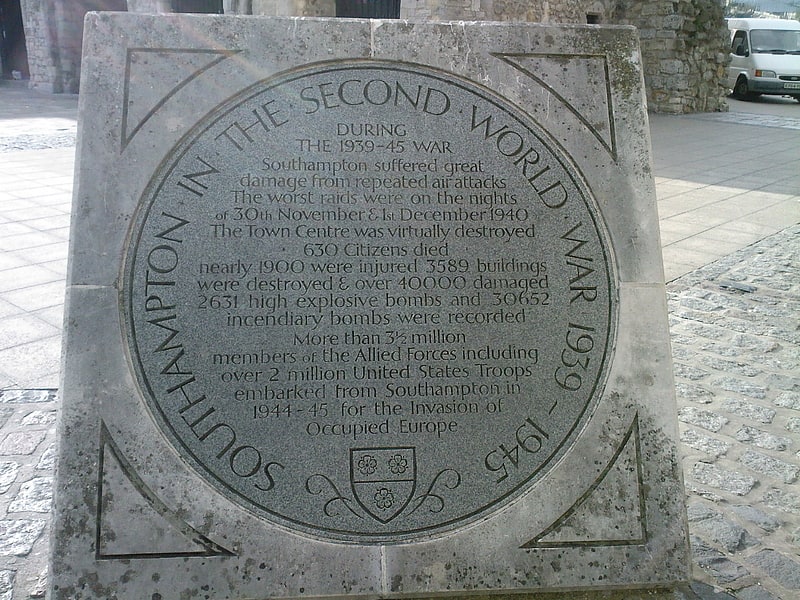
Church in Southampton, England. Holyrood Church was one of the original five churches serving the old walled town of Southampton, England. Built in 1320, the church was destroyed by enemy bombing during the blitz in November 1940. In 1957 the shell of the church was dedicated as a memorial to the sailors of the Merchant Navy. It is a Grade II* listed building.[19]
Address: 3-5 Bernard St, SO14 3AU Southampton (Southampton Itchen)
St. Joseph's Church
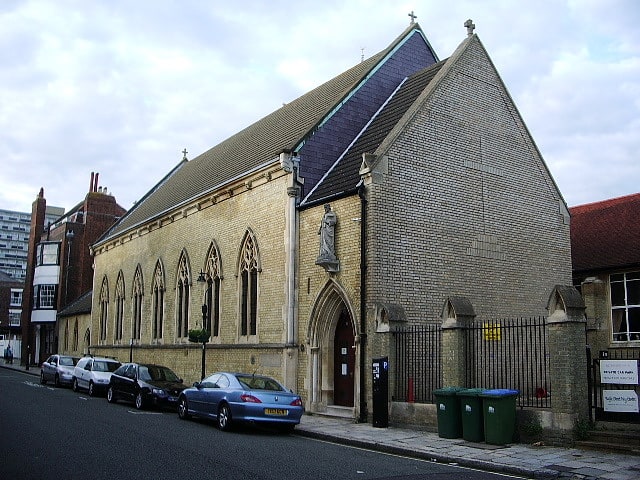
Parish church in Southampton, England. St Joseph's Church is a Roman Catholic parish church in Southampton, Hampshire. It is situated on Bugle Street, in the centre of the city, north of Town Quay. The church chancel was designed by Augustus Pugin and built in 1843. It was the first Catholic church founded in Southampton after the Reformation. It was the pro-cathedral of the Diocese of Portsmouth in 1882. It is a Grade II listed building.[20]
Address: 49 Bugle Street, SO14 2AG Southampton (Southampton Itchen)
Mayfield Park
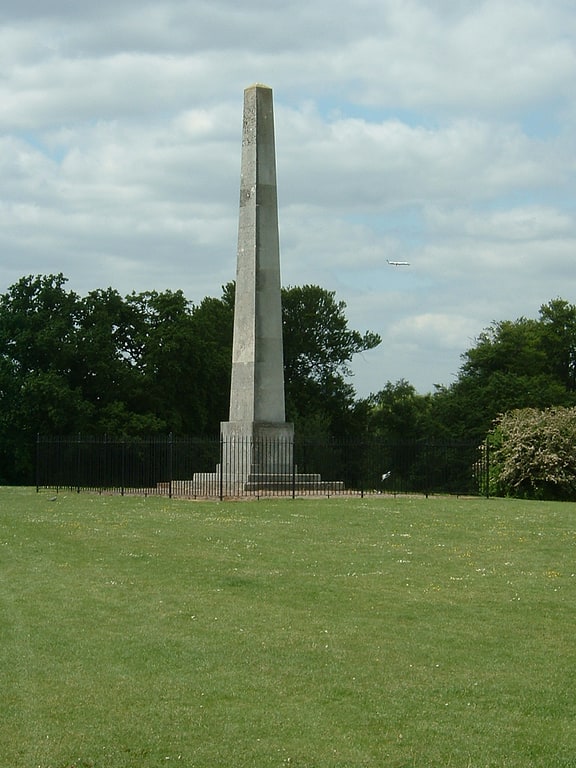
Bowling club in Southampton, England. Mayfield Park is a recreational area straddling Woolston and Weston in Southampton, England. The stream that runs through the park is the boundary between the two districts of modern Southampton.
The park is owned and maintained by Southampton City Council. It was previously part of the Chamberlayne family's Weston Grove estate. Much of the rest of the Weston Grove estate has been used to develop the post-war suburb of Weston. Mayfield Park survives because it was split from the Weston Grove estate in the nineteenth century, becoming the Mayfield Estate.[21]
Address: Mayfield Park Weston Lane, SO19 9HL Southampton (Southampton Itchen)
Highfield Church

Church in Southampton, England. Highfield Church is a parish church in the Highfield district of Southampton, England. It is an Anglican Church in the Diocese of Winchester.[22]
Address: Highfield Lane, SO1 7 1 Southampton (Southampton Test)
St Mary's Church
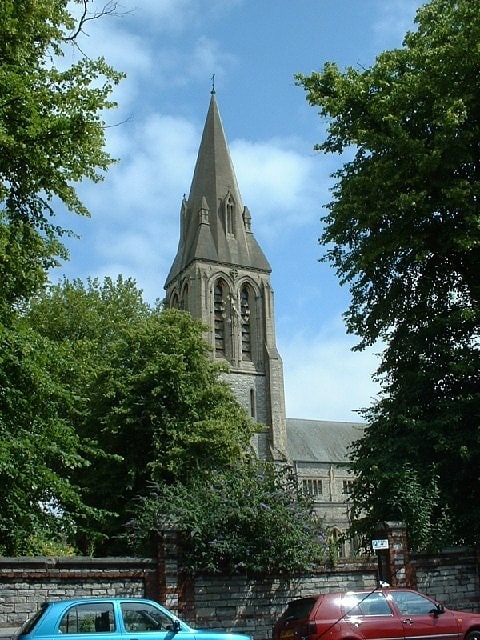
Anglican church in Southampton, England. St. Mary's Church, Southampton is a Church of England parish church, and the largest church in the port city of Southampton on the south coast of England. It is the mother church of this city with its forerunners spanning back to the first Saxon settlements of the 7th century, including a major collegiate church of the European Middle Ages dedicated to the same patron saint. Its name has been used nearby for major street names and in St Mary's Stadium, the city's largest sports stadium. Parts of the church date to the 1880s.
In 1914 the sound of its church bells inspired the song, "The Bells of St. Mary's", originally recorded in 1919 by Frances Alda and later sung by Bing Crosby in a film of the same name.[23]
Address: St Mary St, SO14 1AQ Southampton (Southampton Itchen)
Eling Tide Mill
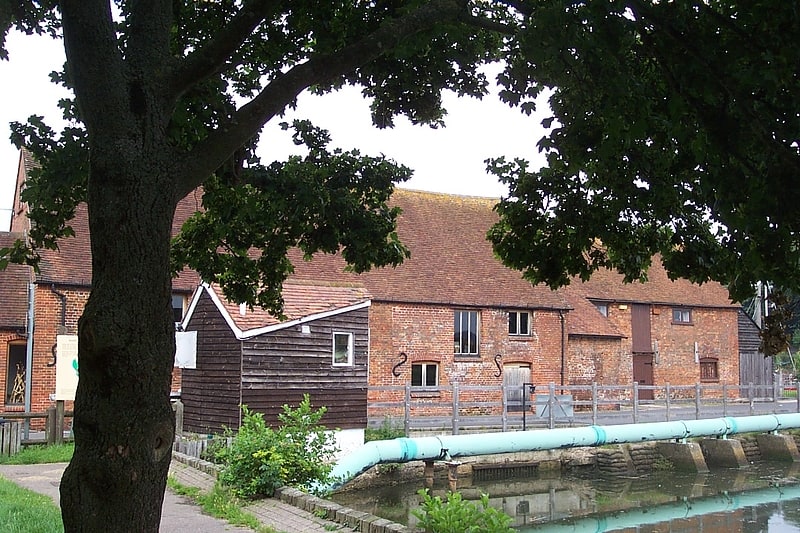
Building in Totton, England. Eling Tide Mill, situated on an artificial causeway in Eling in Hampshire, England, is one of only two remaining operating tide mills in the United Kingdom. The other is Woodbridge Tide Mill in Suffolk. Whilst a mill is mentioned in the Domesday Book of 1086, there is no evidence that there is any connection to the present mill. The current mill was rebuilt roughly two hundred years ago after storm damage in the 1770s. Eling Tide Mill is the focal point of The Eling Tide Mill Experience, created in 2009 when the tide mill, nearby Totton & Eling Heritage Centre, and the outdoor walks at Goatee Beach and Bartley Water came under the same management and marketing. It is a Grade II* listed building.[24]
Mayflower Theatre

Theatre in Southampton, England. Mayflower Theatre is a Grade II listed theatre in the city centre of Southampton, England, with a capacity of 2,300. It features West End theatre shows when they tour the United Kingdom. In addition to this, one-off comedy shows and music events often take place at the theatre too.[25]
Address: Southampton, Commercial Road
Watts Park

Watts Park, also known as West Park, is an urban park in the city of Southampton. It is named in honour of Isaac Watts, the Congregationalist minister and hymn writer who was born in the city. It was built between 1854 and 1866, and in 1995 was designated Grade II* on Historic England's register of historic parks and gardens.[26]
Miller's Pond
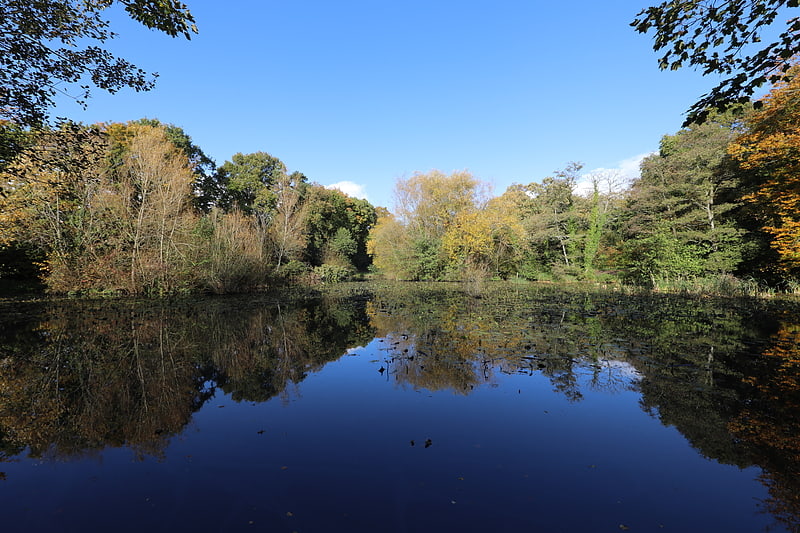
Nature reserve in Southampton, England. Miller's Pond is an 8.1-hectare Local Nature Reserve in Southampton in Hampshire. It is owned and managed by Southampton City Council.
The pond is managed for both angling and wildlife. There are also areas of acid grassland and semi-natural woodland.
The pond is fed by springs and drains to the stream that runs through Mayfield Park.[27]
The Cenotaph
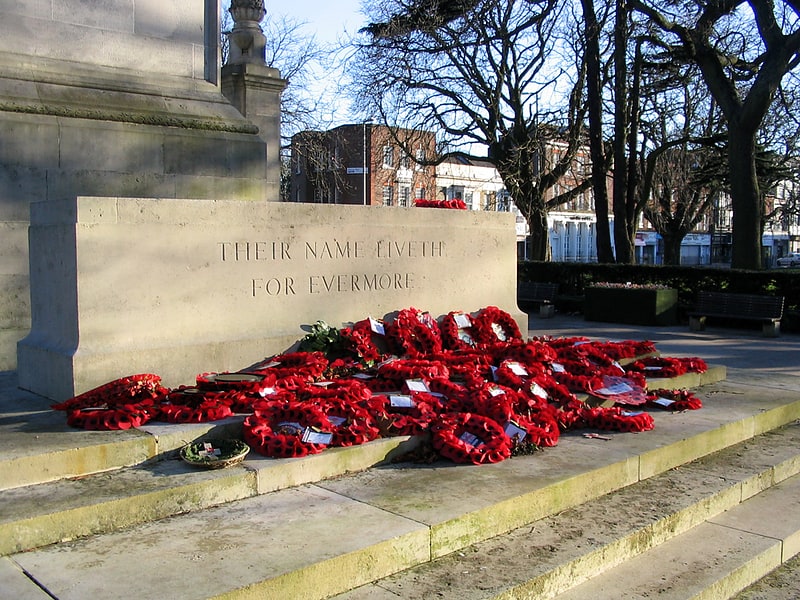
War memorial in Southampton, England. Southampton Cenotaph is a First World War memorial designed by Sir Edwin Lutyens and located in Watts Park in the southern English city of Southampton. The memorial was the first of dozens by Lutyens to be built in permanent form and it influenced his later designs, including the Cenotaph in London. It is a tapering, multi-tiered pylon which culminates in a series of diminishing layers before terminating in a sarcophagus which features a recumbent figure of a soldier. In front is an altar-like Stone of Remembrance. The cenotaph contains multiple sculptural details including a prominent cross, the town's coat of arms, and two lions. The names of the dead are inscribed on three sides. Although similar in outline, later cenotaphs by Lutyens were much more austere and featured almost no sculpture. The design uses abstract, ecumenical features and lifts the recumbent soldier high above eye level, anonymising him.
The memorial was unveiled at a public ceremony on 6 November 1920. Shortly afterwards, concerns emerged that the list of names on the cenotaph was incomplete. After a newspaper campaign, more than 200 further names were identified and these were eventually added to the cenotaph. The names of most Jewish casualties were omitted, the Jewish community being unhappy that the memorial featured a Christian cross. By the beginning of the 21st century, the engravings on the memorial had deteriorated noticeably. Rather than re-cut them and damage the stonework, they were supplemented by a series of glass panels that bear all the names from the cenotaph, as well as names from the Second World War and later conflicts. The panels were unveiled in 2011. The memorial is a Grade I listed building, having been upgraded in 2015 when Lutyens's war memorials were declared a national collection.[28]
Port of Southampton

Port in Southampton, England. The Port of Southampton is a passenger and cargo port in the central part of the south coast of England. The modern era in the history of the Port of Southampton began when the first dock was inaugurated in 1843. The port has been owned and operated by Associated British Ports since 1982, and is the busiest cruise terminal and second largest container port in the UK. The volume of port traffic categorises Southampton as a Medium-Port City globally.
The port is ten miles (16 km) inland, between the confluence of the rivers Test and Itchen and the head of the mile-wide drowned valley known as Southampton Water. The mouth of the inlet is protected from the effects of foul weather by the mass of the Isle of Wight, which gives the port a sheltered location. Additional advantages include a densely populated hinterland and close proximity to London, and excellent rail and road links to the rest of Britain which bypass the congestion of London.
The average tidal range is approximately 5 feet (1.5 metres), with 17 hours per day of rising water thanks to the port's "double tides". These allow the largest container and cruise ships access to the port for up to 80 per cent of the time, according to the container terminal operator DP World Southampton. The effect is a result of tidal flow through the English Channel: high tide at one end of the Channel (Dover) occurs at the same time as low tide at the other end (Land's End). Points near the centre have one high water as the tidal swell goes from left to right, another as it then goes from right to left. Neither is as high as the one at each end.
The principal berths are divided into three areas, The Old Dock at the junction of the Rivers Test and Itchen consisting of berths 20–49; The New Dock, known as the Western Dock, built by the Southern Railway consisting of Berths 101–110; and the Container Terminal consisting of berths 201–207. The container terminal was constructed entirely on reclaimed land, with berth 201 opening in 1968.
The berths at the container terminal have since been renamed. Berths 207 to 204 are now berths SCT 1 to 4 respectively and the reconstructed berths 201/202 now SCT 5.[29]
Bargate

Building in Southampton, England. The Bargate is a Grade I listed medieval gatehouse in the city centre of Southampton, England. Constructed in Norman times as part of the Southampton town walls, it was the main gateway to the city. The building is a scheduled monument, which has served as a temporary exhibition and event space for Southampton Solent University since 2012.[30]
Address: 6 E Bargate, SO14 2DL Southampton (Southampton Itchen)
Royal Victoria Country Park
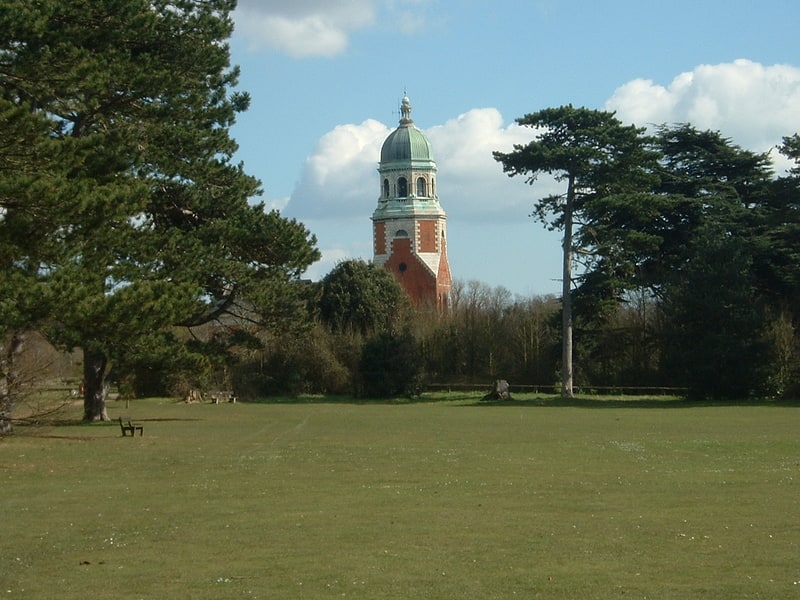
Country park in England. The Royal Victoria Country Park is a country park in Netley, Hampshire, England, by the shores of Southampton Water. It comprises 200 acres of mature woodland and grassy parkland, as well as a small shingle beach.
From 1863 until 1966, the site was home to the Royal Victoria Hospital. The site was acquired by Hampshire County Council in 1969, who opened the park to the public in 1970.
All that remains of the hospital is the chapel, which acts as a heritage centre providing history of the hospital. It also has a 150-foot viewing tower, providing views over the park, and across Southampton Water to Hythe, and on a clear day, as far as Southampton itself.
The site also has a park office and tearooms. The building housing this was built using 100 different timbers from around the UK and British Empire. It was originally built in 1940 by the YMCA for entertainment, recreation and relaxation for staff and patients at the hospital.
There is also a miniature narrow-gauge railway the Royal Victoria Railway on the site which runs for around 1 mile.
The park is home to a large variety of fauna and flora.
The park can be reached on foot via a footpath from Netley Station, or there is ample car parking on site.
The Netley Military Cemetery to the rear of the hospital site, primarily for patients, is accessible to the public by a private footpath and with a lockable security fence, a key to which can be obtained from the shop next to the tearooms. Among those buried here are 636 Commonwealth service personnel who died in the First World War and 35 in the Second World War whose graves are maintained and registered by the Commonwealth War Graves Commission, who also care for the war graves of 69 Germans and 12 Belgians from the First and of one Polish soldier from the Second war.
Southampton Water is an extremely busy shipping lane, with container ships and cruise liners, including the Queen Mary 2 using the port at Southampton as a base.
In January 2014 it was announced that a Heritage Lottery Fund grant of £102,000 would be used for restoring the chapel and revealing more detail of the former hospital.[31]
Address: Netley Abbey, SO31 5GA Southampton
St. Mary's Church
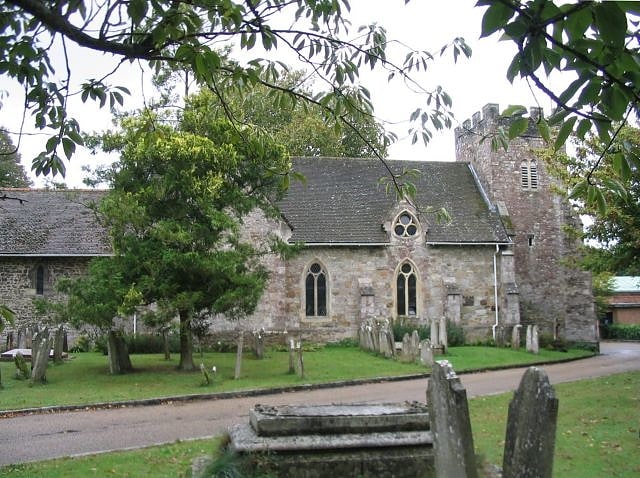
Church in Southampton, England. St. Mary's Church, South Stoneham is one of the two remaining medieval churches in the city of Southampton, England. Parts of the building date from the Norman period and the chancel arch is 12th century. The church lies in a secluded position off Wessex Lane, near the north-eastern edge of Southampton and is almost hidden in the Southampton University accommodation campus.[32]
Address: St Mary's Church Cl, SO18 2ST Southampton (Romsey and Southampton North)
St. Michael's Church

Building in Southampton, England. St. Michael the Archangel Church is the oldest building still in use in the city of Southampton, England, having been founded in 1070, and is the only church still active of the five originally in the medieval walled town. The church is a Grade I Listed building.[33]
Address: St Michael's Square, SO14 2AD Southampton (Southampton Itchen)
Cobden Bridge
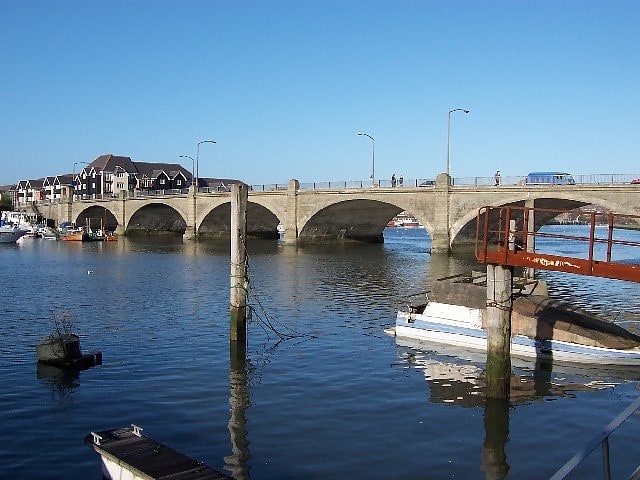
Bridge in Southampton, United Kingdom. Cobden Bridge is a major road bridge in Southampton, UK. It crosses the River Itchen joining the suburbs of St Denys and Bitterne Park. It forms part of the A3035. The present bridge dates from 1928, but there has been a bridge on this site since 1883.[34]
Southampton Guildhall

Building in Southampton, England. Southampton Guildhall is a multipurpose venue which forms the East Wing of the Civic Centre in Southampton, England. There are three venues in the Guildhall catering for various event formats: the Guildhall itself, the Solent Suite and a lecture theatre.[35]
Address: Southampton, W Marlands Rd, Southampton SO14 7LP, England